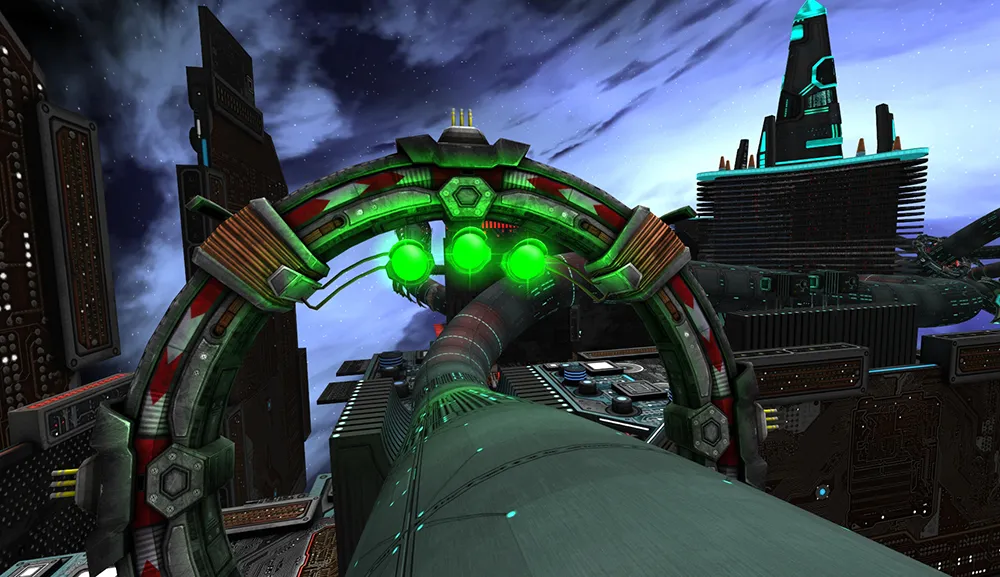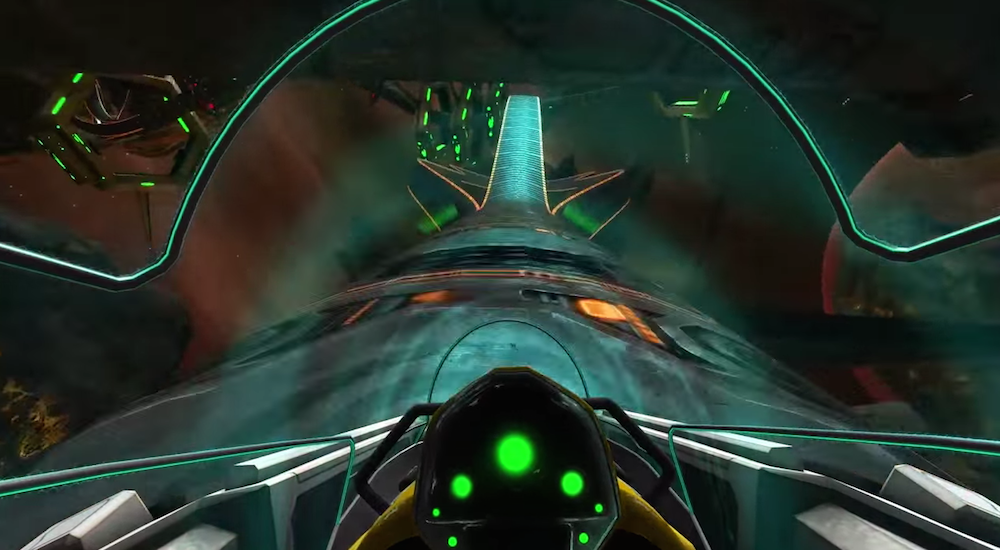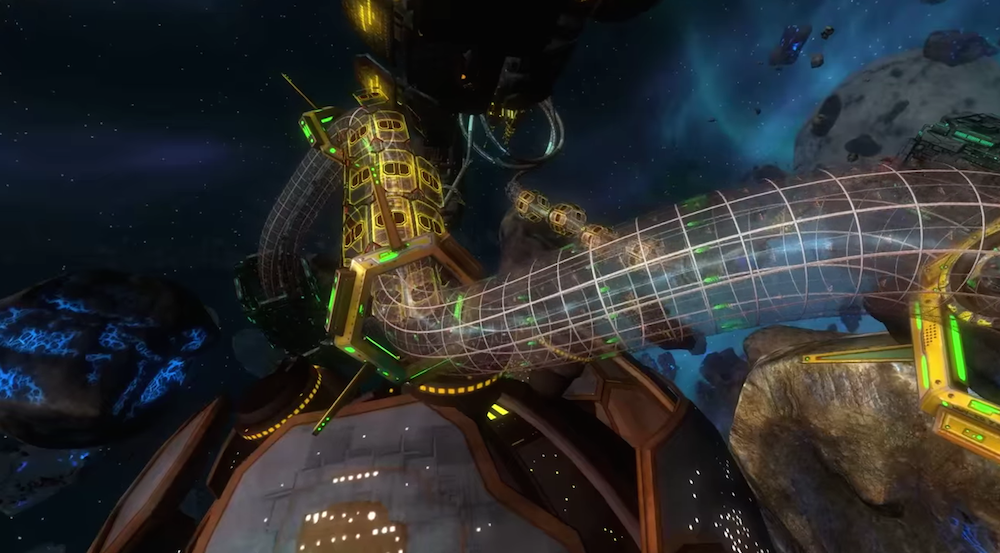Let me say up front that I’m not one of those people that thinks every racing game has to be a Mario Kart clone in order to be fun. Gran Turismo, Forza, Burnout, Need For Speed these are all racers I enjoy that don’t have a single red shell in sight.
I hope it’s clear then that I do believe racing games can be thoroughly enjoyable by focusing simply on speed, controls, and the thrill of competition. The problem, is that Radial G is not one of those games.
Radial G borrows heavily from the classic F-Zero racing handbook: go fast, try not to get rammed by other cars, go fast, make your way to the head of the pack through fancy maneuvering, go fast, and go fast.
The focus in each race is 100 percent on speed with no weapons or projectiles to speak of. The bulk of your time will be spent aiming your space-age vehicle towards green boost pads on the cylindrical track while avoiding other cars or momentum stopping red barriers called “gates.”
You do this by rotating your car around the worm-like track until it’s in the optimal position to dodge, boost, or jump. This combination of high speeds and vortex inducing gameplay sounds like it should be a blast in VR. But, unfortunately, it’s not.
The speed of the game feels thrilling for a brief period, but ultimately – even at top speed – I never felt an “oh boy now we’re really cooking” sort of sensation. When my velocity topped out I always wished I could just go a little bit faster and this disparity was frustratingly tantalizing.
The radial mechanic from which the game derives its name is also somewhat of a missed opportunity. You don’t actually steer in Radial G. Your car is glued to the track and your only goal is to be in the right position to hit a boost or dodge a gate. This was fun at first but quickly becomes monotonous. It felt more like a Temple Run style endless runner than an exciting and tightly controlled racer.
Boredom is Radial G’s biggest weakness. The races just aren’t exciting or challenging enough to merit any type of true adrenaline rush. Getting into first place is laughably easy and staying in the lead is even more of a breeze.
During one race I knew that I was driving absolutely horribly. I was falling into crevasses, hitting tons of gates, and generally making a fool of myself. It was to my great surprise then to look down and discover that I was firmly locked into first place. I went on to win a race that I had utterly botched and it felt anything but satisfying.
Radial G offers multiple game modes, online multiplayer with up to 16 racers, and a “career” mode to try and spice up the content. However, the career mode is just the same collection of races and challenges over and over; the game modes are inventive, but not enough so to offset the repetitive nature of the core gameplay; and online mode is simply more of the same against humans rather than AI.
VR makes the game more interesting but it never feels like Tammeka Games truly innovated on the platform beyond creating a standard cockpit view that Eve: Valkyrie already nailed so thoroughly. They do deserve points for creating a game that is almost entirely focused on high speed spinning, that also creates absolutely no motion sickness.
Radial G also has one of the best soundtracks of any Rift Launch title bar none.
Studio: Tammeka Games
Platform: Oculus Rift
Price: $25
Release Date: March 28, 2016
Comfort Rating: Intense
–
When the initial excitement of spinning around inside of a fast moving future-care wears off the unfortunate fact is that Radial G – despite being a well made game with a rocking soundtrack – simply isn’t very much fun to play.




























